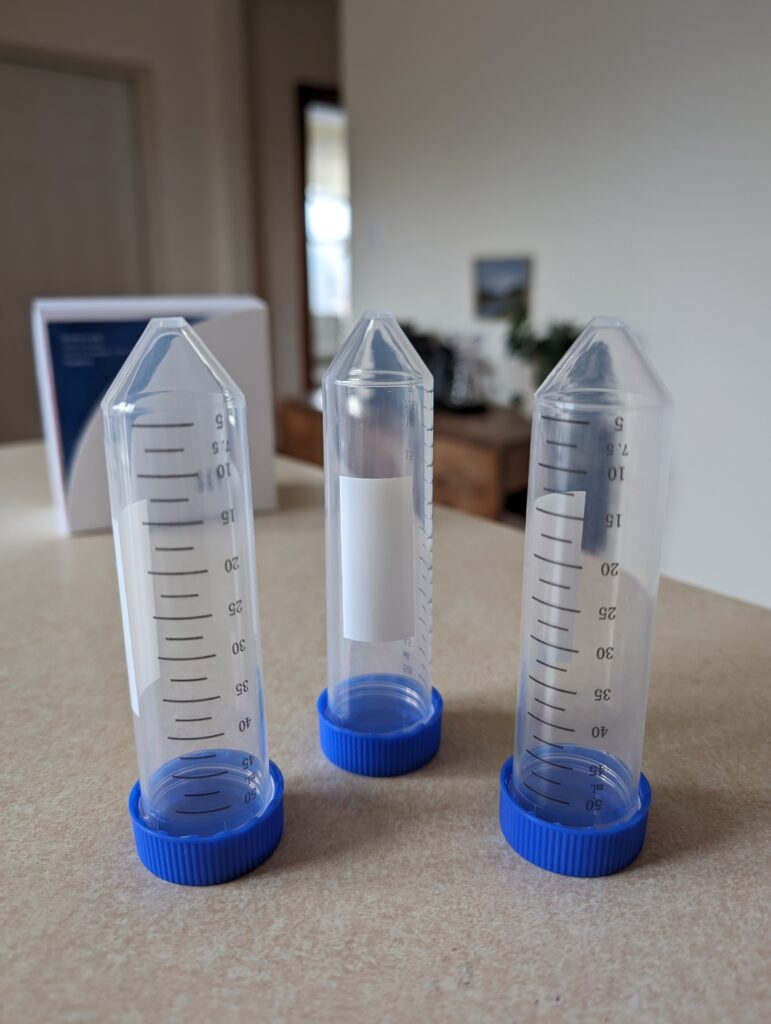Only in the coffee enthusiast world would people complain about bags being too big. Saving money by buying a two pound bag? No thanks, I’ll go with the 250g option.
Maybe this sounds crazy but bear with me; coffee has a limited window of freshness, smaller bags allow you to brew a wider variety of coffee. But even with smaller bags, the allure of having multiple coffees on rotation is palpable. Not to mention the FOMO of seeing a hot new Pepe Jijón release on Instagram.
Enter freezing coffee. I’ll have to make a future post on the merits and what I’ve learned about coffee freezing in general, but today is all about the tubes.1

current solution
Until I can buy a walk in freezer or at least a deep freeze chest, my freezer space is limited. I needed a way to securely store smaller samples of coffee. I had seen mention online of people using centrifuge tubes, so I decided to give it a shot. (It’s a similar concept to the single dosing tubes people with excess counter space like to use.)
Look for lab-grade plastic centrifuge tubes. The 50ml size will hold around 20-23g depending on the coffee’s density and bean size. These are pretty affordable and can be re-used.
workflow
After resting a coffee, I fill two to three tubes full. Leaving as little room for air as possible.2
I then place a piece of tape on the tube and record identifying information like the farm, country, and roaster. I also like to put the roast date and freeze date as part of tracking this experiment.
When you’re ready to brew the frozen coffee either, take out a tube and grind the beans frozen3, or let it thaw (with the tube unopened) overnight.
let me warn you about the smell
A word of warning for my aromatic associate; the tubes I got stank. When I first opened them they smelled like rubbing alcohol and formaldehyde. This made me concerned for the safety of my precious beans. But after leaving the tubes out, with the cap off, for an hour or so the smell had dissipated. And after leaving a test sample in a tube overnight at room temp, I noticed no negative effects. My tubes were sterilized (perhaps a weird sentence in retrospect) and maybe this smell is a byproduct of that.
benefits
Thanks to the tubes, I now have ten coffees available to brew without having to worry about degrading flavors. It’s genuinely exciting to know that I could have a super sweet coffee from Mexico one day and the next have a coffee from Costa Rica that taste like green apple Hi-Chew.

what’s next
But I must admit, as I write this, I’m yet to remove a single tube. Instead I keep locking away new stashes in the vault that is my freezer. Like a anxious squirrel who never eats anything they bury.
So, stay tuned to find out if hundreds of grams are ruined or I’m running the best multi-roaster cafe on the block.